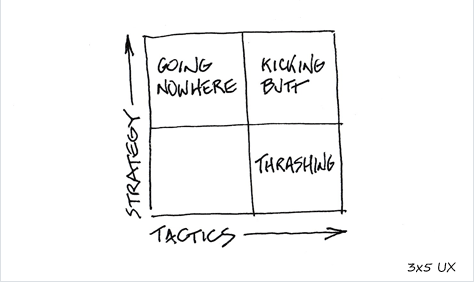What Is the Difference Between Strategy and Tactics?
“Strategy without tactics is the slowest route to victory. Tactics without strategy is the noise before defeat.”—Sun Tzu
Strategy newbies often get confused over the difference between strategy and tactics. Dictionary definitions don’t really help to disambiguate these terms from one another either. References often state that the difference lies in the size or the time frame of a plan. So, if a plan can fit within a larger plan or it is of a shorter duration, it is tactical. Big picture, longer-term plans are, therefore, strategic. While such definitions can serve as helpful, high-level guidelines, they don’t really provide enough specificity for students who want to have a deeper understanding of strategy. Another reason such definitions are problematic is because strategy can exist at multiple levels; plus, strategies can fit within other strategies.
At its root, strategy is about activities that lead to differentiation, as shown in Figure 1. It is about formulating a plan to win and deciding where and how you are going to play. Doing strategy requires you to determine your core capabilities as an organization, effective combinations of those capabilities, and the management systems that you will use in realizing your organization’s goals. Strategy is as much about determining what you will do as what you won’t do. French scholar Michel de Certeau suggests that strategy “inherently creates its own autonomous space.”

At the end of the day, any organization has only so many resources, capabilities, and time at its disposal. We use strategy to set the course of an organization—whether a company, non-profit, or non-governmental organization (NGO); or a division, business unit, or even a UX team within a larger organization.
Tactics are how strategy gets implemented. They are the specific activities that we execute to realize a strategic intent. A tactic alone cannot produce a winning result. We typically coordinate tactics to produce synergistic results and realize an overall strategic plan. The military General and strategist, Carl von Clausewitz, wrote that the use of tactics produces the victory, whereas the original intent of a strategy is the victory itself.
